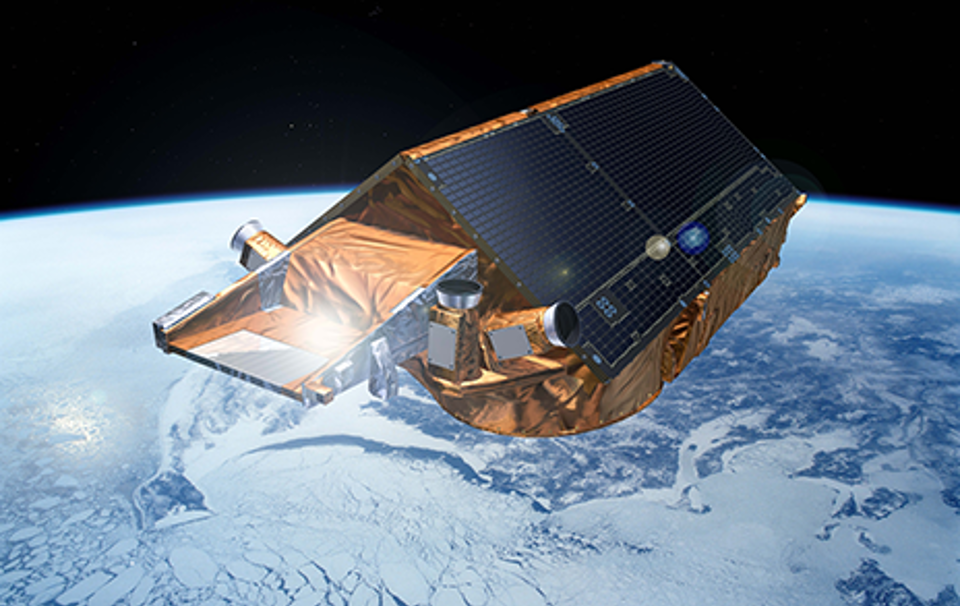2016-08-23
Software from Terma Provides for Further Extension of the European CryoSat-2 Mission
Successful update of the Star Trackers and a fine general performance leads to an expected further extension of the mission.

Copenhagen, Denmark – After seven and a half years in space, ESA’s important Earth observation satellite CryoSat-2 is scheduled to end its current (extended) mission at the end of 2017. Since 2010, it has monitored and collected huge amounts of highly valued data on thickness of polar sea ice and monitoring changes in the ice sheets that blanket Greenland and Antarctica
However, presently the spacecraft performs well with healthy batteries, sufficient amount of fuel, and a payload that works excellent with the platform.
Recently, Terma concluded a successful update of the three onboard Star Trackers, and in concert with the fine performance in general, it is the hope that the software update will contribute to secure a further extension of the mission until 2019 and perhaps even two additional years.
Star Trackers are important instruments onboard Earth observation satellites as they secure correct orientation in space. This is crucial for the validity of the measurements. Terma supplied three Star Trackers of the type HE-5AS for CryoSat-2.
“ESA contacted Terma and asked us to develop a concept to handle the inevitable aging process of the Star Trackers. We accepted the challenge and have now developed a method to handle updates at a long distance. ESA as well as Terma assess the effectiveness and precision to be even better compared to the original level,” said Peter Davidsen, Systems Engineer, Terma Space.

"We have already seen the effectiveness of these Star Tracker improvements in the first few months of in-orbit use. The Star Trackers noise performance is now close, if not better than it was at the time of launch in 2010, which has given us great confidence that we can now continue to operate Cryosat-2 for many more years on behalf of all our users. This update is without doubt an essential part of the decision to extend the mission", said Mike Krassenburg, Head of ESA’s Post Launch Support Office.
This adds an extra dimension to Terma’s Space business because the technology can be transferred to other satellite missions: “Naturally, we offer this newly developed Star Tracker software to other costumers. On top of this, we prepare new Star Trackers for future updates,” said Peter Davidsen.
Terma has delivered Star Trackers to more than 50 missions since 1999, and the company prepares an introduction of a new advanced and highly effective compact Star Tracker.
The CryoSat Mission
ESA’s CryoSat mission is dedicated to measuring the thickness of polar sea ice and monitoring changes in the ice sheets that blanket Greenland and Antarctica.
Diminishing ice cover is frequently cited as an early casualty of global warming. Since ice, in turn, plays an important role in regulating climate and sea level, the consequences of climate change are far reaching. It is therefore important to understand exactly how Earth’s ice fields are responding to these c – and by how much.
The satellite flies at an altitude of just over 700 km, reaching latitudes of 88° north and south, to maximize its coverage of the poles. Its main payload is an instrument called Synthetic Aperture Interferometric Radar Altimeter (SIRAL), the first sensor of its kind designed for ice, measuring changes at the margins of vast ice sheets and floating ice in polar oceans.
The radar altimeter is not only able to detect tiny variations in the height of the ice, but it can also measure sea level with an unprecedented accuracy.

Who we are
Terma in Brief
The Denmark based high-tech Terma Group develops products and systems for defense and non-defense security applications; including command and control systems, radar systems, self-protection systems for aircraft, space technology, and aerostructures for the aircraft industry.
Learn more about us



